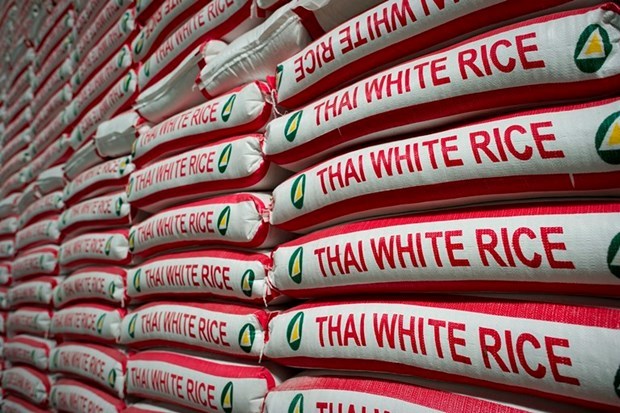
Thailand's rice exports to the Philippines are expected to double this year, the Thai Rice Exporters Association said, as rival supplier Vietnam faces capacity constraints.
Philippine rice imports hit 3.7 million tons last year, making it the world's second-largest importer of the staple. The figure is likely to remain roughly the same in 2023. The country, which is battling inflation and various food shortfalls, is forecast to produce about 12.4 million tons, below the 15.8 million tons needed, according to the U.S. Department of Agriculture.
Of the Philippines' total rice imports last year, some 90% came from Vietnam -- the country's biggest supplier for decades due to its competitive pricing and close bilateral trade ties. The remainder of Philippine imports came from Thailand.
"This year, the Philippines is expected to buy more rice from Thailand as Vietnam is having a smaller crop," said Chookiat Ophaswong, honorary president of the Thai Rice Exporters Association.
Land used for the 2022-2023 growing season in Vietnam shrunk 3% from the previous season, likely pushing production down 1% to 27 million tons. Local rice consumption is forecast to be 21.5 million tons in 2023, unchanged from the previous year. That would leave about 6 million tons of rice available for export in 2023, versus 7.1 million tons in 2022.
Adding to the problem is a drought that has been hammering poorly irrigated Cambodian farms since late last year. "Over the past few years, Vietnam had a stable supply of rice because about 1 million tons a year was being smuggled into the country from Cambodia, allowing Vietnam to export 7 million to 8 million tons," said Chookiat. "But this year there's no more rice from Cambodia to bolster Vietnamese exports."
With supplies somewhat limited, Vietnam exported only 400,000 tons of rice in January, down 20.9% from the same period last year, according to the Ministry of Agriculture and Rural Development of Vietnam.
In contrast, Thailand foresees a large harvest this year, with reservoirs across the country at or near capacity, allowing cultivation of rice outside the usual growing season.
During the 2022-2023 season, Thailand is expected to produce around 20.2 million tons of rice, up from 19 million tons in the previous season. Domestic consumption will account for 12 million tons, with the remainder earmarked for export.
Traders and exporters said the Philippines has already reached out to Thai exporters, hoping to secure rice for the second quarter.
The Philippines' switch to a new supplier comes as the government tries to keep a lid on prices of food staples amid inflation that is at a 14-year high.
Inflation reached 8.7% in January, the highest recorded since November 2008, partly on rising food prices. President Ferdinand Marcos Jr. has agreed to import more agricultural products such as sugar and onions amid domestic shortages.
"The situation has forced Manila to buy rice from Thailand to meet demand and curb inflation," said a trader at an international trading house in Thailand. Strong demand from the Philippines was expected to double Thai rice exports to Manila to 300,000 tons in 2023, up from 180,000 tons the previous year.
Even with fresh demand from the Philippines and the usual orders from the Middle East, the Thai Rice Exporters Association predicted that total rice exports in 2023 will be 7.5 million tons -- almost unchanged from 7.6 million tons the previous year.
"That was a conservative forecast," said Chookiat. "In fact, we have up to 8.2 million tons or more left for export, as we can grow rice all year round."
He added that the association is monitoring the situation and will raise the 2023 export forecast if it sees production increasing or finds fresh demand.
Source: Nikkei Asia
Share: